Disposable bomb clusters RBK-500 in Special Operations
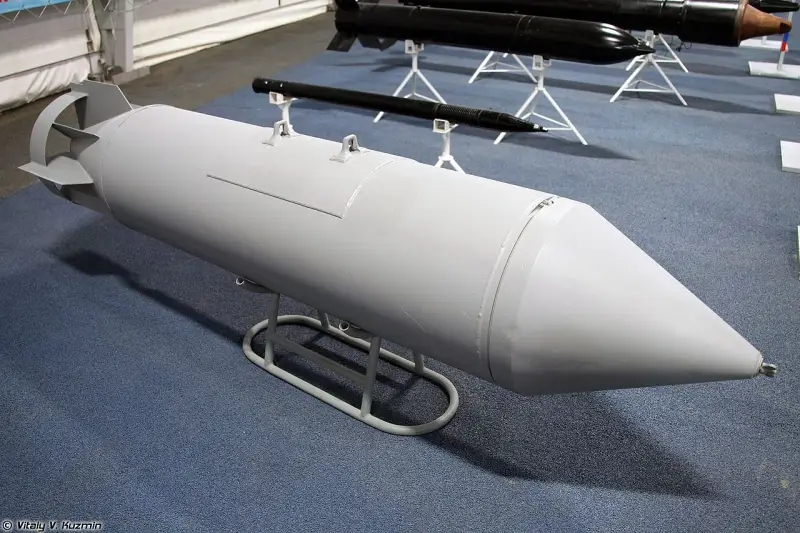
Disposable bomb cluster RBK-500 AO-2,5RT with fragmentation combat elements. Photo Vitalykuzmin.net
In the arsenals of the Russian frontline aviation There are disposable RBK-500 bomb clusters that carry different types of combat elements. Since last year this weapon It is actively used against the positions of Ukrainian formations and causes them serious damage. Moreover, with the help of modern technology it has been possible to significantly improve the accuracy and efficiency of initially free-falling cassettes.
Retaliatory measures
When the Soviet army was divided, Ukraine received significant reserves of artillery shells and missiles, incl. with cassette equipment. In 2014, similar ammunition began to be used against the two republics of Donbass, and in 2022 against the Russian army. However, systematic attacks by our troops on enemy warehouses led to the depletion of their reserves.
Having suffered losses, at the end of 2022 the Kiev regime began to beg from foreign allies for new cluster munitions of various kinds - artillery shells, rockets for MLRS, tactical missiles and aerial bombs. For several months, this issue was discussed abroad, and in the summer of 2023, the first batch of requested products was delivered to Ukraine.
The Russian army also has various types of cluster munitions, but at that time they were not used in principle. At the same time, our Ministry of Defense warned that it reserves the right to use existing arsenals in the event of foreign ammunition being supplied to Ukraine. Foreign states did not heed this warning, and the Russian army took the promised measures.
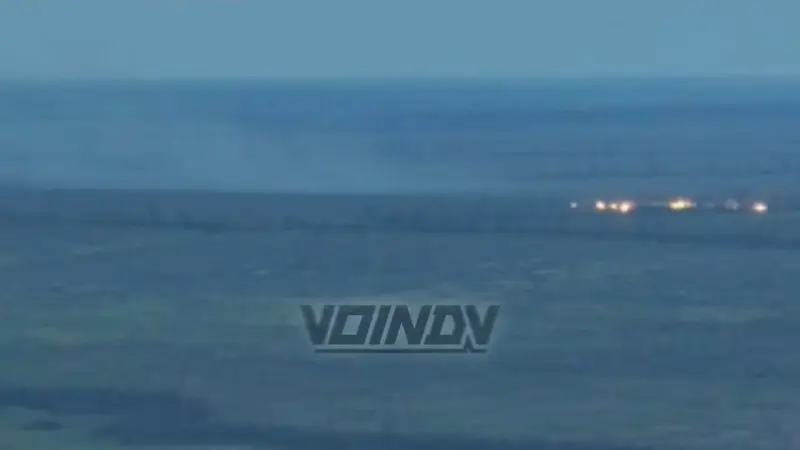
The first known attack using RBK-500. November 2003, district of the settlement. Staromayorskoe. Photo Telegram / "Warrior DV"
Combat application
According to various unofficial sources, already in the summer of last year, our front-line aviation began to use its disposable 500 kg caliber bomb clusters - RBK-500. The Ministry of Defense did not confirm this information. In addition, there were no photographs or videos confirming the information received.
In mid-November, within a few days, several videos appeared on specialized resources showing the use of RBC-500 products. Work on targets in open areas or in various shelters was demonstrated. In all cases the result looked the same. A series of small flashes suddenly occurred in the area, scattered over a large area. At the same time, the area was literally seeded with fragments of submunitions with almost complete destruction of manpower and other “soft targets.” Cassettes with anti-tank elements could also be used.
Soon information appeared about measures aimed at increasing the effectiveness of cluster bomb strikes. It was unofficially reported that RBC-500 is used together with universal planning and correction modules of the UMPC. This device increased the flight range of the cassette after being dropped, and also sharply increased the accuracy of reaching the point of release of combat elements.
Later, information about the use of RBC-500 with UMPC was confirmed. Photos of such ammunition, which completed its task, were distributed across specialized resources. Subsequently, new similar photographs were published again. In all cases, an empty casing of a cluster bomb, without a tail section, could be seen, crushed upon impact with the ground. This indicated the successful operation of the ammunition and the release of combat elements over the intended target. The empty cassette with the UMPC continued to fly until it fell to the ground.
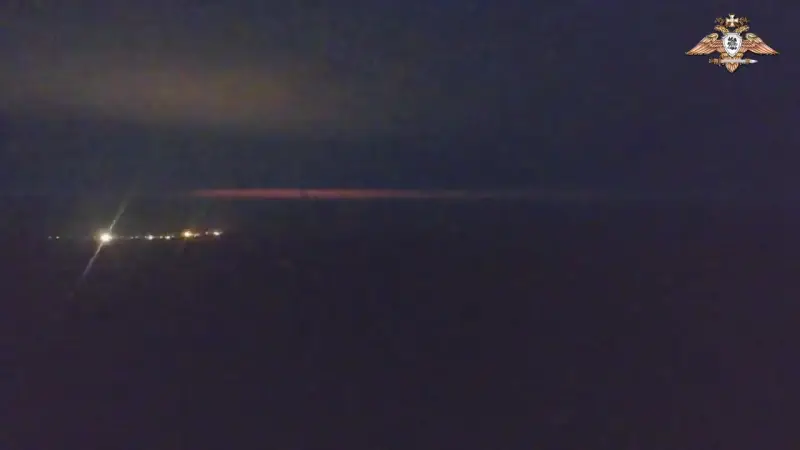
Night airstrike; submunition explosions are clearly visible. Photo by NM DPR
According to known data, front-line aviation continues to use disposable cluster bombs and use them to attack enemy positions in different sectors of the front. At the same time, RBC-500’s own qualities are complemented by the advantages achieved through the planning and correction module. Together with other aircraft weapons, the RBK-500 and UMPC provide combat aircraft with the necessary capabilities and contribute to the continued demilitarization of the enemy.
Ammunition family
The current family of disposable cluster bombs, which are in service with the domestic aerospace forces, was created and put into service in the early eighties. The creation of the RBCs themselves and the filling for them was carried out by the Moscow State Research and Production Enterprise Basalt, a leading developer of aviation bomb weapons. Subsequently, the company continued to develop the family of cassettes and supplemented it with new models with various submunitions.
Over the years, more than a dozen different cassettes in three calibers have been developed within the RBC line - 100, 250 and 500 kg. Due to the largest dimensions, volumes and load-carrying capacity, which determine the combat potential of the design, the main development has been in the direction of 500 kg cassettes.
RBK-500 products are assembled in several types of housings with different shapes. Depending on the type of combat elements and other factors, a cylindrical body with a flat head or with a conical or ogival head fairing is used. The design of the tail unit also differs. Moreover, all cluster bombs have a standard body diameter of 450 mm. The length of the products is from 1,95 to 2,5 m.
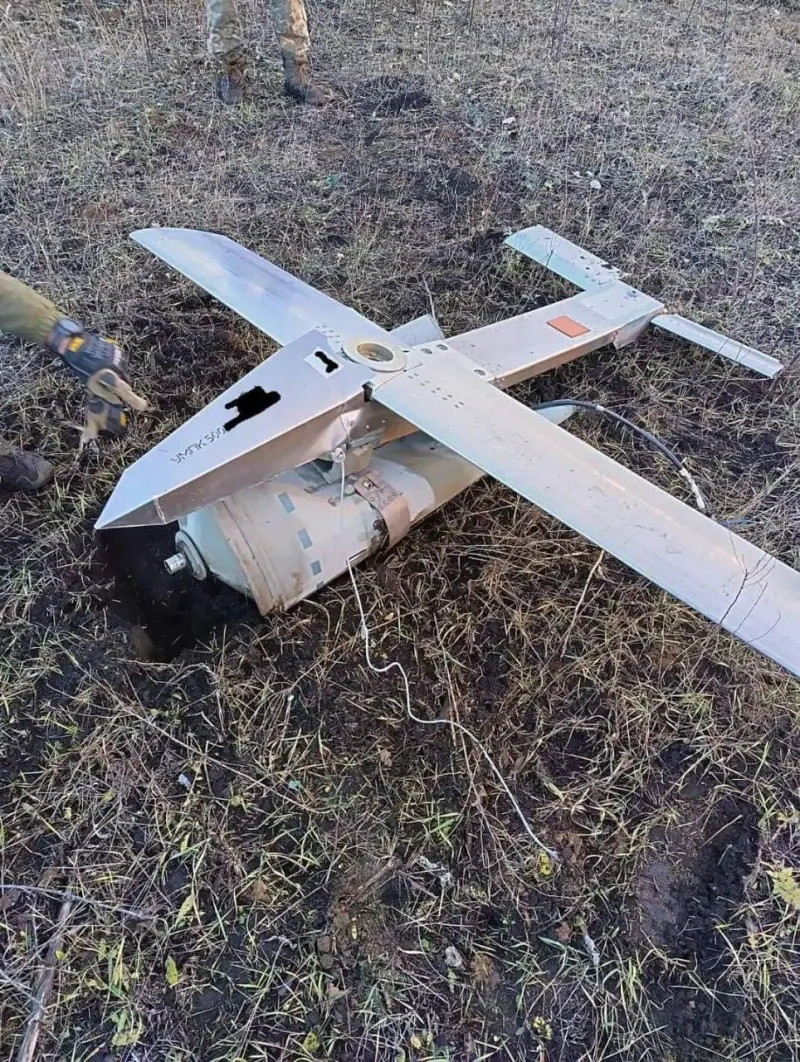
RBK-500 with the UMPC module after dropping submunitions. A cassette with a flat head and fragmentation combat elements was used. Photo Telegram / "Military informant"
A remote fuse and an expelling charge are placed in the head of the body. The main volume of the cassette is given over to the combat load in the form of a large number of submunitions. In accordance with the installation of the fuse, the expelling charge is detonated, which separates the body and throws out the combat elements. The latter fall independently within the calculated ellipse.
Products with AO-2,5RT and OAB-2,5RT fragmentation submunitions are designed to attack area unprotected targets. These products have a mass of 2,5 kg and affect manpower within a radius of several meters. The cassette body with a conical fairing includes 108 AO-2,5RT elements or 126 OAB-2,5RT elements. The mass of such RBCs reaches 500-504 kg. There is also a 520 kg cassette with 10 OFAB-50UD elements. Essentially, these are high-explosive fragmentation bombs of 50 kg caliber.
The destruction of various buildings, fortifications and other area objects is carried out using concrete-piercing and incendiary combat elements. Thus, the RBK-500 BetAB can accommodate up to 10-12 combat elements capable of penetrating airfield slabs or building floors. The incendiary cassette carries approx. 300 ZAB-2,5SM elements weighing 2,5 kg each.
A number of anti-tank RBCs have been developed. There are two variants of cassettes with PTAB cumulative combat elements that penetrate at least 200 mm of armor. Such modifications of the RBK-500 carry 352 and 268 submunitions and have a mass of 520 and 430 kg, respectively.
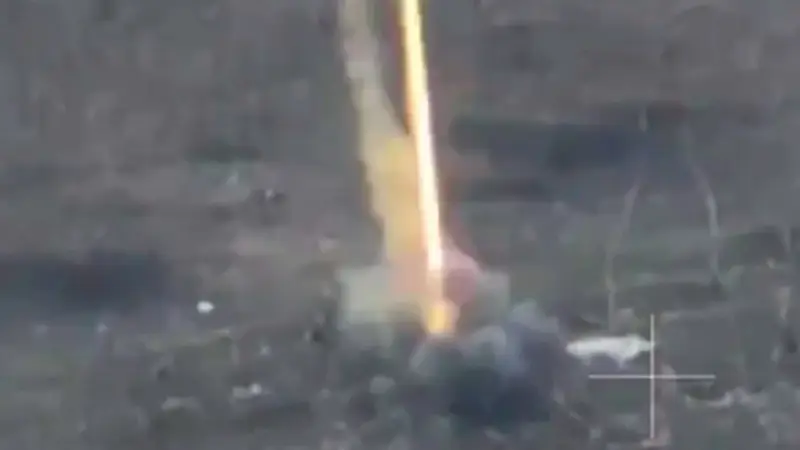
Triggering of the Motiv-3M combat element. Photo Telegram / "Military Chronicle"
Of particular interest is the RBK-500 SPBE-D product, equipped with 15 self-aiming anti-tank combat elements. The SPBE-D "Motiv-3M" submunition is a compact device weighing 14,9 kg with an infrared target sensor and a cumulative warhead. After being ejected from the cassette, such a combat element descends by parachute and scans the underlying surface for the presence of armored objects. When a target is detected, a command is given to detonate the warhead with the formation of an impact core that penetrates at least 70 mm of armor.
The RBK-500 series cassettes can be used by all domestic front-line aircraft and army helicopters. The number of such products and their placement on the external sling is determined by the characteristics of the combat mission. Recently, cluster bombs have been equipped with UMPC modules, intended for use by Su-34 front-line bombers. The release is carried out from heights of at least 300 m at sub- and supersonic speeds.
Part of the Arsenal
The Russian Aerospace Forces are armed with a wide range of aerial bombs - guided and free-falling, general purpose and specialized. To solve some combat missions, it is proposed to use disposable bomb clusters in calibers from 100 to 500 kg with one or another filling. RBK-500, both independently and in combination with UMPC modules, shows itself to be an effective and convenient means for solving some combat missions. In addition, they successfully complement other bombs.
It should be recalled that the use of disposable cluster bombs by our Aerospace Forces was a response to foreign supplies of similar weapons to Ukraine. Considering the results of using the RBK-500 in all directions, we can say with confidence that the foreign patrons of the Kyiv regime made a big mistake. By supplying cluster shells, they independently caused serious problems for their wards.
Information